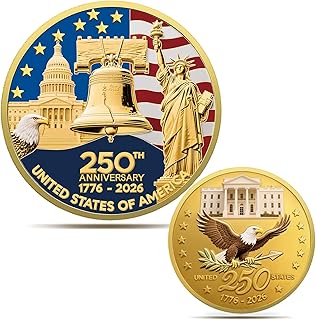When faced with the responsibility of selling an estate coin collection, it’s natural to feel somewhat out of your depth, particularly if you're not well-versed in the multifaceted world of numismatics. However, even as an executor who has inherited this task, you are perfectly capable of managing the process effectively and efficiently. This article is designed to be a comprehensive guide, providing step-by-step instructions on how to evaluate, organize, and sell the coin collection at your disposal. With the right approach, you can maximize the collection's value and navigate the sale with assurance.
When faced with the responsibility of selling an estate coin collection, it’s natural to feel somewhat out of your depth, particularly if you're not well-versed in the multifaceted world of numismatics. However, even as an executor who has inherited this task, you are perfectly capable of managing the process effectively and efficiently. This article is designed to be a comprehensive guide, providing step-by-step instructions on how to evaluate, organize, and sell the coin collection at your disposal. With the right approach, you can maximize the collection's value and navigate the sale with assurance.
Step 1: Assess and Organize the Collection
The first order of business is to get a clear picture of what you’re working with. This means assessing the magnitude and scope of the collection. The collection could cover a wide range from casual to serious acquisitions or investments. Rare coins are often stored distinctively in albums, holders, or even graded and sealed by professional grading services. To maintain their value, it’s crucial not to clean the coins, as doing so will likely cause irreparable harm to their numismatic worth.
Organizing the coins is equally important. You can start by grouping coins by national origin, (e.g., U.S. versus foreign coins) and then by denomination and series within those categories. For instance, segregate loose dimes, quarters, and dollars, and further sort silver dollars into subsets like Trade or Morgan dollars.
Step 2: Research and Identify Value
With the coins organized, the next key step is to determine their value. Coin value is dictated by a variety of factors including mint year, mint mark, condition, and scarcity. Valuation resources, such as online databases, reference books, and reputable coin-related websites, will be instrumental in your research. Moreover, professional input can be invaluable. Consider reaching out to coin experts or established dealers when specific knowledge is required.
Step 3: Obtain Expert Appraisals
Acquiring a professional appraisal lends credibility to the value you may have assigned to the collection and provides essential documentation for future negotiations with buyers. It’s advisable to pursue multiple appraisals to ensure you are receiving fair market prices and to get a consensus on the collection’s worth. Adequate credentials and experience in numismatics are a must for any appraiser you consider.
Step 4: Choose a Reputable Coin Dealer
Selecting the right coin dealer can make a world of difference. Seek out those with strong reputations, verifiable customer satisfaction, and professional affiliations. Reputable dealers value their credibility and will provide clear pricing, explanations, and offers. Avoid being pressured into hasty decisions or accepting lowball offers.
Step 5: Consider Auctions or Online Marketplaces
For those who are comfortable with digital processes, selling through an auction or online marketplace can be advantageous. Auctions, in particular, can draw serious collectors willing to pay more for coins of note. Online platforms can expose your collection to a larger number of potential coin enthusiasts. Presentation matters greatly in these venues, so accurate descriptions and quality photos are essential.
Additional Considerations When Organizing Your Collection
Including U.S. Silver coins (dimes, quarters, half dollars, and dollars) which date back to the Depression era is common in many estate collections. Their value isn't only historical but also intrinsic, as they contain 90% silver, a practice discontinued in modern minting. Furthermore, understanding that numismatics was particularly popular with members of "The Greatest Generation" could mean the inclusion of rare or highly sought-after pieces in the collection. Gold, silver, and platinum bullion coins may also be present, with their value tied to their precious metal content.
When preparing for assessment and sale, group the coins thoughtfully. For instance, rare coins, or those that stand out as key dates or lower mintage, should be grouped for individual assessment. Non-PVC flips and holders should be used to protect these coins from scratches during storage and inspection. Tools such as "The Official Blue Book: A Handbook of U.S. Coins" or the "Blue Sheet" from the Coin Dealer Newsletter can assist in determining more approximate values.
Preparing for Sale
Having categorized and researched the coins, the time comes to decide on a method of sale. If immediate liquidation is necessary or if the best rate is not the absolute priority, selling to a local coin dealer may be optimal. Should maximizing monetary return take precedence, consider auction houses or online sales platforms like eBay. Do be mindful of the commissions or fees inherent in these methods, as they can chip away at profits.
It cannot be overstressed that whichever sales method you opt for, being informed is key. Know about the rarer, low mintage, and potentially more valuable coins in the collection. Should time and resources allow, professional grading might further increase the marketability and therefore the value of select pieces.
Final Thoughts
The importance of a strategic, informed approach cannot be understated when selling an estate coin collection. Take your time, educate yourself, garner appraisals, and align with trustworthy sales avenues. At every turn, remember that thoroughness and attention to detail will serve you well, ensuring a fair and rewarding selling process.
Stay tuned for our next guide installment, where we will delve into best practices for securely shipping and insuring coins during a sale. Proper handling of these final steps is crucial to safeguarding the transaction and the valuable pieces within your care.
Information for this article was gathered from the following source.




